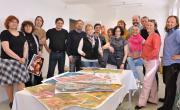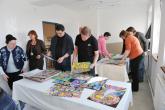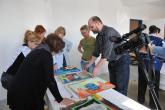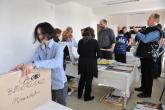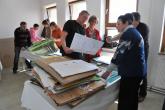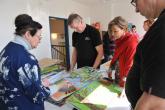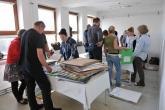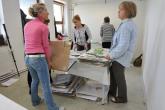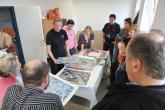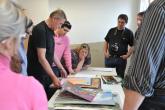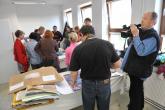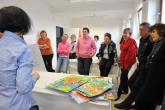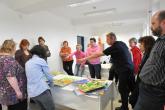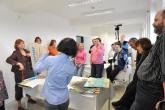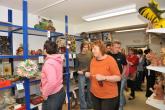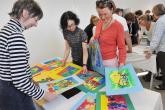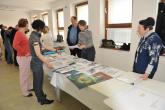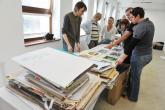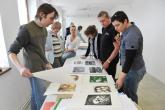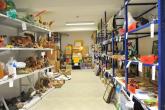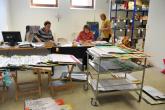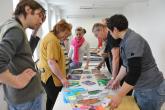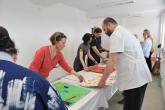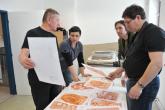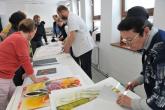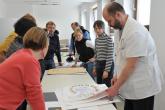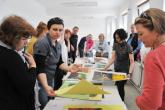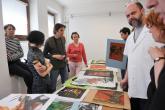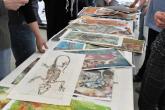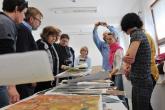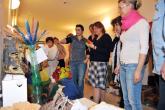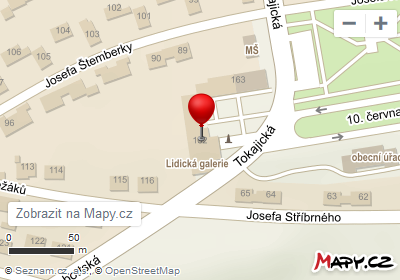Homepage » Archived editions » 38th edition » Panel of judges
Panel of judges
The expert panel of judges is made up of teachers of visual art branches at primary art schools and primary schools and of professional visual artists. The number of judges is not fixed, however, the panel has usually 10 - 15 judges. Many of them have engaged in the work with children for many years and also are judges in other art competitions which enhances their knowledge about the quality of art education of children in the schools in our country and abroad.
The expert panel of judges sat to evaluate the entries at the Lidice Gallery at Lidice on 6 and 7 April 2010.
Report of the Session of the Expert Panel Judges Held on 6 - 7 april to Evaluate the 38th ICEFA Lidice 2010
Chairman of the panel:
- ZEDNÍK, Josef – an artist, Olešná
Judges:
- BABINEC, Zdeněk – the headmaster of the Primary Art School Kopřivnice
- HOMOLA, Martin – a photographer, Buštěhrad
- JUNKOVÁ, Ivana – the headmaster of the Primary Art School Řevnice
- KRUPKOVÁ KŘESADLOVÁ, Lada – a photographer and teacher at the Primary Art School Biskupská, Prague 1
- MENCLOVÁ, Hana – a teacher at the Primary Art School Mšeno
- MOUPIC, Zdeněk – a teacher at the Primary Art School Olomouc
- RAJDL, Pavel – a teacher at the Primary Art School Kolín
- SPĚVÁČKOVÁ, Jaroslava – a teacher in the visual art department of the Primary Art School Plzeň
- SCHWARZOVÁ, Ivana – a teacher in the visual art department of the Primary Art School Strakonice
- STARÁ, Lada – a teacher in the visual art department of the Primary Art School Nové Strašecí
- SYNECKÁ, Zdena – a methodologist at ARTAMA Praha
- VLČKOVÁ, Zuzana – a teacher at Gymnázium Kladno
- KIŠKA, Igor - a teacher at the Primary Art School Skalica, Slovak Rebuplic
- DE GRAEVE, Emi – an artist, Meerbeke, Belgium
KASALICKÁ, Ivona – the curator of ICEFA Lidice
As the year 2010 was declared the Year of Biodiversity, the UNESCO proposed to dedicate the 38th ICEFA Lidice 2010 to a theme relating to BIODIVERSITY – VARIETY OF LIVING NATURE. Children could draw inspiration from many sub-themes: beetles and butterflies in my country, who lives in rivers and lakes of my country, trees and forests in my country, wildflowers and graminoids in my country.
The theme of this year’s international competition prove to be very suitable and well chosen. Countless amount of beetles, butterflies, fish and other freshwater and marine animals, birds as well as trees, graminoids and terrestrial and aquatic plants filled the Lidice Gallery more than enough. The role of the panel was quite difficult with such a lot of entries (by three thousand more than last year). The vast majority of schools took a responsible attitude to the theme, trying hard to draw on it thoroughly. Their collections were well thought out, consisting of well-done and well-chosen works. They should be commended because they pleased the panel very much. Like every year, it was very interesting to compare styles of submitted works and their degree of elaboration as well as inventiveness and creative contribution of a child or a group of children. Sad to say, however, there are a number of teachers who are of the habit of sending in all works made in an art lesson including the unfinished works or the evidently poor ones. It is a shame, for such a superficial attitude cannot bring good results and be successful. It is interesting to see how much influence the teachers exert over their pupils and what methods they prefer in leading the children and in choosing subjects and themes. Sometimes it is detrimental that to some extent, children’s minds are influenced by just one structure, one style, which is easily recognizable in all 2D or 3D works (the same decor, stylization, glaze, patina or the same colours of prints in printmaking).
Foreign entries
The foreign entries surprised the panel by the “globalization” of their artistic expression, manifested particularly in the countries with a specific tradition in visual arts (primarily Asia). In this circumstances, it was rather exceptional that the collections from the countries of the former Soviet block have retained a certain tradition, though possibly not quite acceptable for the Czech visual feeling. On the other hand, it can be clearly seen that children are keen on doing visual art work in those countries. Some collections were very large so that the panel of judges had a wide choice (Belarus, Latvia, Russia, Turkey, Ukraine) while some other countries offered just a few entries.
Seeing the entries, the panel appreciated national traditions and features of the respective countries – however, the differences between pictures from various countries were not so big as might be assumed. It can be said that, permeating one another, the limits of perceiving cease to work, which may be quite understandable in the time of the Internet and other mass media. As has become a tradition, entries by children from Bulgaria, Rumania and Latvia were well appraised, with Latvia sending in only the best entries from the “preliminary exhibition” held by the Czech embassy in Riga. A distinct collection came from Turkey, with bold colours and decorative background occurring in all the pictures. Another successful collection came from Malaysia – primeval forest, its plants and animals, well-elaborated in term of spatial layout and composition, in bold and vivid hues; from South and North Koreas – experienced and mature traditional drawing, calligraphic attempts; from Egypt – strong colours, dry pastel, subjects enriched with figural compositions; and from Ethiopia – oil painting on canvas, the subject being interconnection of nature and man, cultivation of soil and breeding of cattle. Nevertheless, there were also sad collections – in spite of the joyous and lively theme recommended, children from Azerbaijan drew war scenes, the injured and the dead; There were suffering, desolation and despair emanating from their pictures.
The number of the photographs sent in to the exhibition was again slightly higher this year than in previous years. The entries which caught the eye of the panel of judges were the very professional photo collections by Croatian children, who work in many photo clubs. The category of foreign 3D entries had the fewest prizes – the panel of judges stated they are of a very poor standard. In particular, it applies to the entries coming from the countries of the former Soviet Union, distinguishing themselves with spectacular, syrupy entries and unsuitable materials used. Another persistent problem is a large portion of the entries damaged on mail.
Although there were more foreign participant this year than ever before (the new were e.g. Bangladesh, Estonia, Ethiopia and Paraguay while Cuba and Mongolia, for instance, resumed their participation), it is a pity that some traditionally interesting countries in terms of visual arts that had participated regularly in the past did not participate this year – maybe because of wars or natural disasters (Srí Lanka). It is more and more evident that ample participation by children from a country is a result of the good work of the Czech diplomatic mission to that country in disseminating the information about the exhibition, inviting children to participate and preparing a proper prize award ceremony to the best ones afterwards.
Czech and Slovak entries
Full of positive messages about nature and the world around us, also Czech and Slovak entries showed the enjoyment of their creators. Among the subjects were often landscapes in the seasons rotating according to the law of nature, animals viewed close up or at a distance, playful floral compositions, colourful drawings and paintings as well as prints. However, as against the foreign entries, there were less pencil or ink drawings, collages and entries of pasting techniques.
The organizers and the panel of judges were pleased by the fact that much more schools from the Czech Republic and from the Slovak Republic took part in the exhibition Besides the traditionally strong presence of Czech primary art schools such as Český Krumlov, Most, Mšeno, Olomouc, Písek, Plzeň, Prostějov, Strakonice or Nymburk (photo collection), also a number of new participants emerged, e. g. ZUŠ Litvínov (a good collection of 3D entries) or Němčice na Hané. Presenting a very sensitive collection of entries this year that drew inspiration from the undersea world and marine depths (grass, corals), the primary art school Kolín proved to be the right holder of the last year’s prize of the panel of judges for its collection. It is this collection that clearly demonstrates the shift in artistic thinking and the potential of the language of art. As against children from abroad, Czech schools are in a better position to send in 3D entries and breakable entries of ceramics, which were represented this year by a vast number of sculptures and decorative objects depicting domestic and wild animals, shoals of fish, flocks of birds and butterflies, swarms of beetles and bees. Also trees and flowers of ceramics, plastic and paper were sent in.
As the work of the teachers at primary art schools is a systematic and qualified one, the entries by the children from these schools win prizes more often. However, that much more the panel of judges values the quality work of teachers at nurseries, primary, special or secondary schools as well as at houses of children and youth. It is more than evident that the personality of the teacher, his/her skills, knowledge, enthusiasm and responsibility are very important factors in the success of their pupils’ work. Sad to say, some schools disappeared that had regularly took part in the competition, maybe due to a generation change of teachers.
Prizes
Out of the total 25,132 entries from 61 countries 1,463 were selected by the panel of judges to win prizes. Children from abroad received 624 prizes, out of which 65 were individual medals and 28 were medals to schools for their collections of works of fine arts. Most of them were won by children from Belarus, Latvia, Russia, Turkey and Ukraine. Besides the traditionally interesting works from the Democratic People's Republic of Korea, India, Indonesia, Japan, Philippines and the Republic of Korea, the photo collections by Croatian children merited extraordinary attention from the panel of judges.
Czech schools were awarded 655 prizes, out of which 48 were individual medals and 28 were medals to schools for their collections. Among the most successful were children from the Primary Art School Kolín, the Primary Art School Strakonice, the Primary Art School Most and the Primary Art School Plzeň. Slovak schools won 184 prizes this year, out of which 16 were individual medals and 4 were medals to schools. The most successful were children from the Primary Art School Banská Bystrica, the Primary Art School Holíč, the Primary Art School Martin and the Primary Art School Spišská Belá.
This year’s prize of the Panel of Judges was awarded to the Primary Art School Spišská Belá that has been sending in first-class collections of prints every year. It can be done only thanks to the long-term, systematic and excellent work of the teachers.
Conclusion
Regrettably, also this year some of the good works of fine art have been excluded from evaluation because of missing proper description on them (incomplete addresses, data in foreign language, poor legibility). Problems with poor identification (this year mainly with entries from Azerbaijan, Egypt and Mongolia) lead not only to the exclusion of those entries from the evaluation by the panel of judges but also to the missing opportunity to send to those schools information letters, catalogues and letters of thanks for participation. A precondition of acceptance of a work for the exhibition is a carefully made description containing relevant data. Notwithstanding our warning to that effect in the invitation, this bad experience of us reoccurs every year.
Josef Zedník
Chairman of the panel of judges of the 38th ICEFA Lidice
Ivona Kasalická
Head of the Lidice Gallery and Curator of ICEFA Lidice
Photo: Martin Homola

